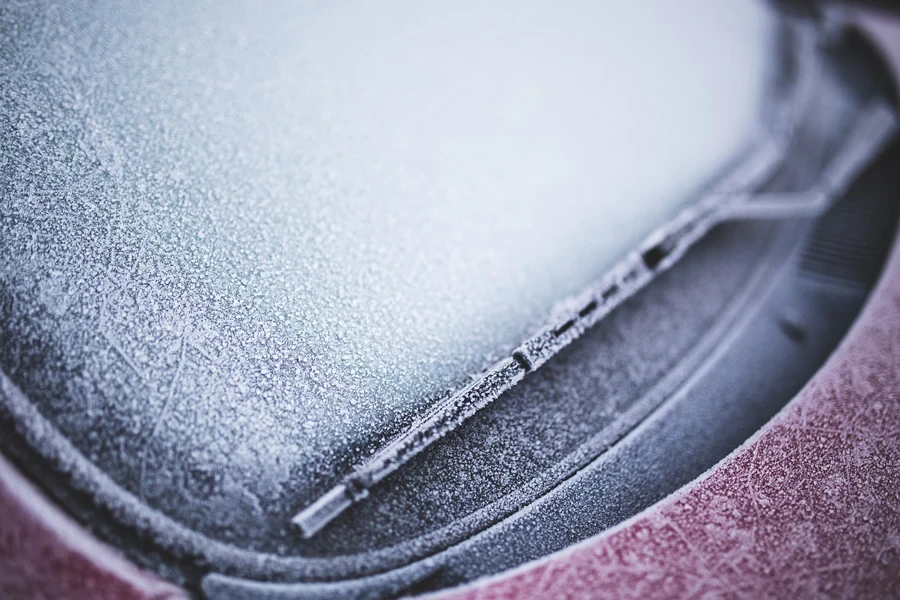Table of Contents
● Introduction
● Market overview
● Key technology and design innovations
● Top-selling models driving market trends
● Conclusion
Introduction
Windshield wipers are not just an accessory but a critical safety feature that ensures drivers maintain a clear view of the road, significantly reducing the risk of accidents. As automotive technology evolves, windshield wipers must keep pace with innovations like autonomous driving and rain-sensing capabilities, which demand high-precision and adaptive wiper performance. The market’s growth is also fueled by the increasing production of passenger cars, commercial vehicles, and electric vehicles, all requiring specialised wiper designs to accommodate different windshield sizes and aerodynamic profiles. Moreover, consumer expectations for quieter, longer-lasting wipers have driven the adoption of premium materials such as silicone and Teflon, which offer better resistance to wear and environmental factors. This growing focus on technological improvements and safety regulations is reshaping the industry, making windshield wipers more integral to vehicle design and performance than ever.
Market overview

As of 2024, the global windshield wiper blades market is valued at $7.3 billion, with a projected growth of $10.8 billion by 2033 at a CAGR of 4.3%, according to Allied Market Research. This growth is driven by increasing vehicle production, the rising adoption of electric vehicles, and heightened safety awareness. Regions like North America lead the market, bolstered by high vehicle ownership and robust demand for aftermarket products. Europe and the Asia-Pacific region also show strong growth, with the latter experiencing rapid expansion in automotive sales, particularly in China and India.
Market segmentation reveals that passenger cars account for the largest share, valued at approximately $2.5 billion in 2024, growing at a CAGR of 3.5%. Commercial vehicles follow, expected to reach $1.2 billion by 2024 with a CAGR of 4.0%, driven by increasing demand for durable and high-performance wipers in heavy-duty applications. The two-wheeler segment, though smaller, is anticipated to grow at a CAGR of 5.5%, reaching $0.8 billion by 2024. Conventional wiper blades dominate the market, but flat blades are projected to grow faster due to their superior performance and longer lifespan.
The original equipment manufacturer (OEM) segment captures a larger share, with new vehicle production fueling demand. However, the aftermarket segment is expected to exhibit a higher growth rate, driven by the increasing number of vehicles on the road and consumer preference for affordable DIY replacement options. The aftermarket is projected to grow significantly, supported by competitive pricing and the availability of a wide range of wiper options.
Key technology and design innovations

The windshield wiper industry is continuously evolving, with advancements in materials and designs that significantly enhance durability, performance, and driver safety. These innovations are improving basic functionality and integrating advanced features to meet the demands of modern vehicles, including electric and autonomous cars.
Material advancements
There has been a shift from traditional rubber blades to advanced materials like silicone, graphite, and Teflon, which offer superior durability and wiping performance. According to Market Research Future, silicone blades are increasingly favoured for their resistance to cracking and extended lifespan, making them suitable for extreme temperatures and high UV exposure. Graphite-coated wipers provide smoother and quieter operation by reducing friction. At the same time, Teflon coatings help minimise streaks and improve the blade’s consistency over time, offering a high-performance solution for demanding driving conditions.
High-tech wiper systems
Innovations such as rain-sensing wipers, automatic activation, and heated wipers transform how wiper systems respond to weather conditions. According to Allied Market Research, the rising adoption of advanced driver-assistance systems (ADAS) has made high-performance wipers crucial for maintaining clear visibility, particularly around areas where cameras and sensors are mounted. Rain-sensing wipers adjust their speed automatically based on precipitation intensity. In contrast, heated wiper blades prevent ice buildup in colder climates, ensuring better safety and driving comfort in all weather.
Aerodynamic designs and integration
Modern wiper designs emphasise aerodynamic efficiency to reduce drag and wind noise, which is particularly important for electric vehicles where minimising noise is essential. According to Market Research Future, incorporating aerodynamic wiper arms helps improve wiping performance by maintaining optimal contact with the windshield at higher speeds. These designs streamline the blade profile to reduce turbulence, more effectively clearing water and debris while enhancing the overall driving experience.
Case study – Valeo AquaBlade™

Valeo’s AquaBlade™ technology exemplifies innovation in wiper design, featuring integrated fluid distribution through laser-cut holes along the blade’s length. This system delivers washer fluid directly onto the windshield for more uniform cleaning and better coverage, especially in areas with mounted sensors. The AquaBlade™ also offers a heated option, which enhances performance in icy conditions by preventing freezing ensuring consistent visibility across various weather scenarios.
Emerging technologies
The future of wiper systems includes promising developments such as laser and ultrasonic cleaning technologies that could replace traditional blades using vibration or focused energy to clear debris from windshields. Additionally, advancements in nanotechnology are being explored to create self-cleaning wipers that resist dirt buildup, potentially extending the lifespan of wiper blades and reducing the need for frequent replacements. These emerging innovations reflect the industry’s commitment to developing more efficient and sustainable solutions for modern vehicles.
Top-selling models driving market trends
The windshield wiper market is shaped by popular models from leading brands, which continue to influence consumer preferences and market dynamics. Key players such as Bosch, Valeo, Michelin, and Trico offer a variety of wipers that cater to different vehicle needs and technological advancements, making them top choices in the industry.
Leading brands and models

The market is dominated by well-known brands like Bosch, Valeo, Michelin, and Trico, which have established themselves with top-selling models known for their quality and innovation. Bosch’s Aerotwin and ICON wipers are highly regarded for their beam blade technology, which enhances contact with the windshield and ensures consistent wiping performance. Valeo’s AquaBlade™ offers unique integrated fluid distribution and heated options, providing superior visibility in all weather conditions. Michelin’s Stealth hybrid wipers combine features of conventional and flat blades, delivering durability and smooth operation. At the same time, Trico’s Exact Fit and Onyx series are favoured for using advanced materials that reduce streaking and extend blade life.
Product differentiation
The features that set these models apart include premium materials, aerodynamic designs, and cutting-edge technologies. According to Market Research Future, silicone and graphite-coated blades are gaining popularity due to their resistance to wear and reduced friction, offering smoother operation than traditional rubber. Additionally, features like rain-sensing capabilities, heated elements for cold weather, and low-noise designs are becoming standard in premium models, appealing to consumers who seek a blend of high performance and convenience.
Impact of premium and aftermarket wipers
High-quality aftermarket wipers significantly shape market trends, as many vehicle owners prefer premium replacement options. Allied Market Research shows the aftermarket segment is experiencing robust growth, driven by the demand for durable and high-performance wiper blades. Brands such as Michelin and Trico have expanded their offerings to cater to specific needs, including heavy-duty wipers for challenging weather conditions. This reflects the growing consumer interest in aftermarket solutions beyond basic functionality.
Consumer preferences

There is a noticeable shift towards hybrid wiper blades, which combine the benefits of conventional and flat designs to deliver better aerodynamic performance and durability. These wipers appeal to a diverse range of vehicle owners, including those with compact cars seeking a sleek profile and drivers of SUVs and electric vehicles who prioritise efficient water clearance and noise reduction. The rising popularity of hybrid wipers underscores a trend towards versatile solutions that meet the varied demands of different driving environments.
Adoption in different vehicle segments
Adopting specific wiper models varies across vehicle segments, with SUVs, compact cars, and electric vehicles driving demand for advanced technologies. According to Market Research Future, SUVs and electric cars benefit from wiper designs that reduce aerodynamic drag, enhancing battery efficiency and performance. This shift towards specialised wiper solutions indicates a broader trend of adapting wiper models to the unique requirements of modern vehicles, ensuring optimal visibility and safety.
Conclusion
The windshield wiper market is experiencing steady growth, driven by increasing vehicle production and technological advancements. Key innovations, such as the shift to materials like silicone and Teflon and the development of rain-sensing and heated wipers, are enhancing durability and performance. The rising popularity of aerodynamic designs and hybrid blades reflects the demand for more efficient and versatile solutions, especially for SUVs, electric vehicles, and compact cars.

Continued innovation is essential to address evolving safety requirements and meet consumer expectations for high-quality wiper systems. As modern vehicles incorporate advanced driver-assistance systems and electric powertrains, the need for specialised wiper technologies that ensure optimal visibility in all conditions will only grow. Leading brands like Bosch, Valeo, Michelin, and Trico will play a crucial role in driving these developments, offering solutions that not only improve performance but also adapt to the unique demands of the automotive industry.




